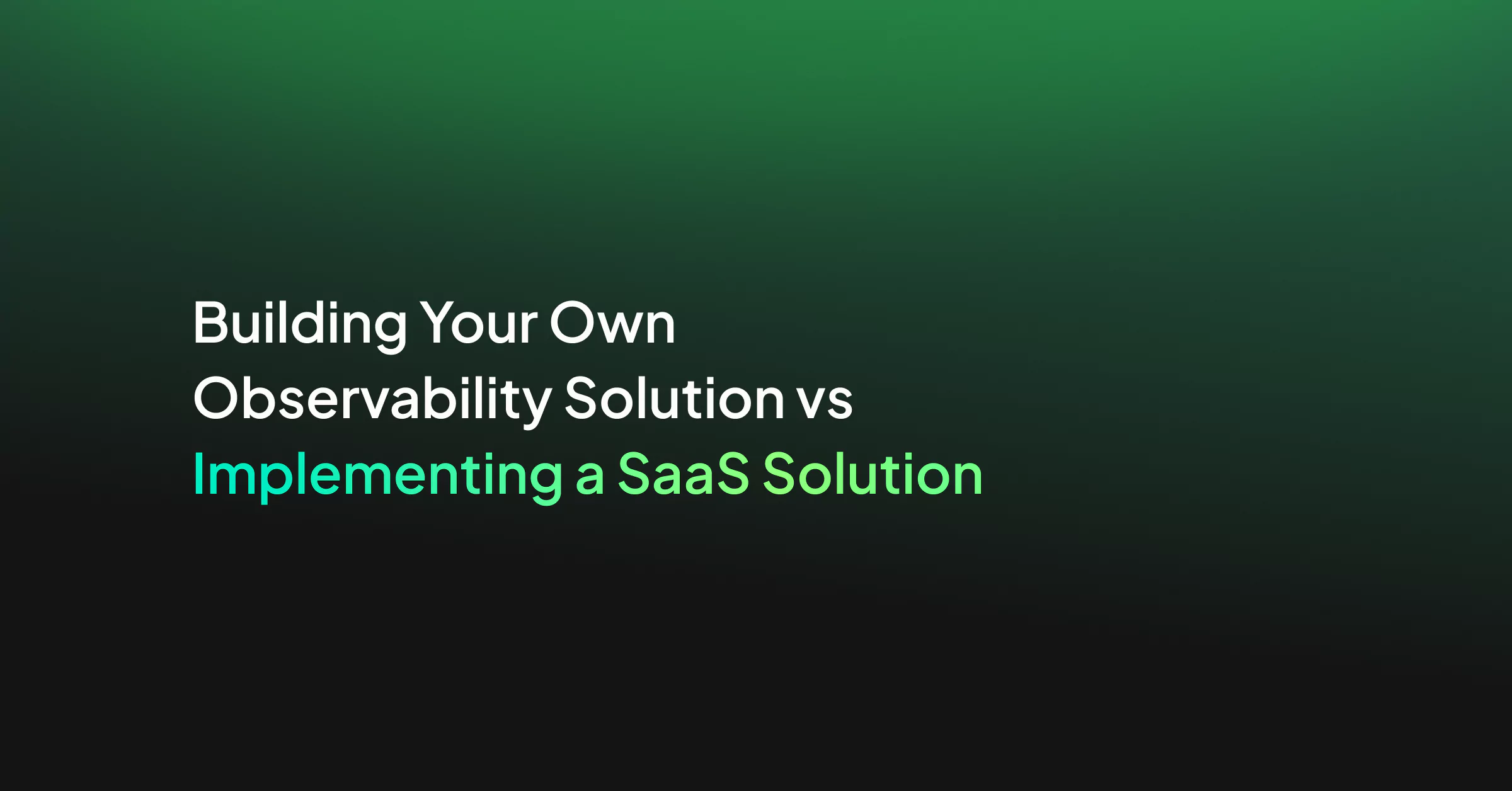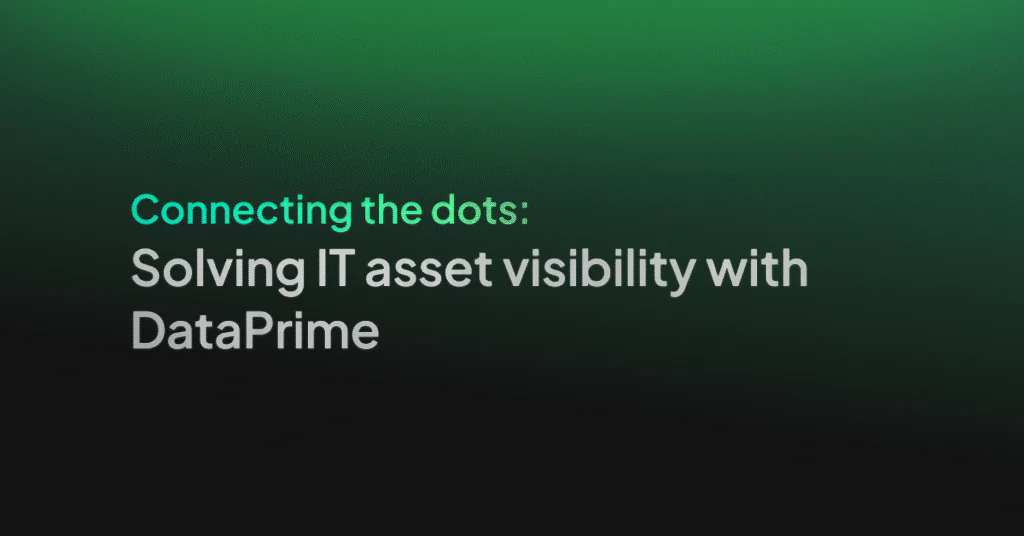Building Your Own Observability Solution vs Implementing a SaaS Solution

Observability is a key component of modern applications, especially highly complex ones with multiple containers, cloud infrastructure, and numerous data sources. You can implement observability in two ways: build your own observability solution or use a homegrown alternative like Coralogix.
In this article, we will discuss what needs to be done to build an in-house observability solution, the pros and cons of that approach, and why you might want to use a SaaS solution such as the Coralogix observability platform.
In-House Observability: How to build your own observability solution?
First, let’s explore what is required from a custom observability stack and how we can build it.
Step 1: Specify requirements: All the functional and non-functional requirements, such as the data format, backup frequency, SDKs, libraries, programming language, etc., must be specified for a successful implementation.
Step 2: Select data collection methods: This may involve instrumenting code for metrics, implementing logging practices, and capturing traces for distributed systems. The tools and frameworks used for metrics, logs, and traces vary across organizations and projects. Naturally, selecting the appropriate data collection method based on the tech stack at your organization is essential.
Step 3: Choosing a database solution: The data collected from the code must be stored in a database for querying. Consider the scalability, performance, and cost of various database options, whether relational, NoSQL, or time-series databases, while choosing a database.
Step 4: Implement data visualization and analytics: Develop tools and APIs for visualizing and analyzing the collected data via dashboards, graphs, charts, etc., to gain insights into system performance.
Step 5: Alerts and notifications: Stakeholders need to be notified about critical issues and anomalies via alerts such as email, SMS, or integration with communication platforms like Slack. So, you must integrate all the communication channels and set up triggers for events such as high CPU usage, error rates, low disk space, high latency, or any other custom metric.
Step 6: Implement user access control: Implement role-based access control (RBAC) to manage user permissions and restrict access to sensitive observability data. Define roles such as admin, engineer, DevOps, security, compliance, read-only, etc., and grant appropriate access levels.
Step 7: Rigorous testing: Conduct thorough testing of the observability tool by performing load testing under different workloads. While testing the tool, consider future scenarios, such as integration with other tools, changing requirements, parsing observability data, etc.
Step 8: Providing documentation and training: It is difficult to use and maintain observability tools without proper documentation. Carefully document the implementation details, configurations, and usage guidelines, along with training the teams responsible for operating and maintaining the observability stack.
Step 9: Create a support team: Continuous testing and improvement are a part of the lifecycle due to changing requirements and evolving technologies. A dedicated support team must be put into place for ongoing maintenance, updates, and improvements for the solution.
Pros and Cons of Building an In-house Solution
Now that you understand what is required to build an in-house observability stack, let’s explore the pros and cons of this DIY approach.
Pros
Fully Customizable
Be it the database, backup frequency, programming language, or security measures, an in-house tool allows teams to tailor every aspect of the solution to match the requirements and workflows of the organization. A fully customized solution helps you quickly adapt to changing technologies and business needs.
Cons
Time Investment
Building an observability system is a huge task requiring a good understanding of production-grade systems. Plus, building a scalable and resilient system needs extensive planning, testing, execution time, and refinement. Therefore, building an observability stack will impact the product’s time-to-market and delay the benefits of observability.
Monetary Investment
The hidden costs of in-house solutions, such as talent hiring, hardware/server needs, software licenses, and required tooling, can add up quickly. Unanticipated expenses may also arise during development, and ongoing maintenance costs may fluctuate.
Ongoing Maintenance
Maintaining an in-house observability system is a long-term commitment. Teams must continuously update, debug, and enhance the system to keep pace with the changing requirements and updating technologies.
The continuous research and development, feature addition, upgrade, version management, etc. that goes into maintaining an in-house observability stack is resource intensive. Continuous maintenance requires a dedicated team, which diverts those resources from other core business requirements.
Data Challenges
Data is the most important element for an observability solution because everything revolves around collecting, formatting, transporting, visualizing, and storing data.
Data Storage and Retention: A common challenge for an observability solution is managing the storage and retrieval of large volumes of data efficiently, especially as the system scales.
Data Security and Compliance: Ensuring that sensitive data is handled securely when dealing with logs and traces that may contain personally identifiable information (PII) is vital. Improper logging can be a reason for data leaks in your organization. Therefore, meeting regulatory and compliance requirements related to data privacy, storage, and access becomes necessary.
Data Silos: Integrating and normalizing data from various sources can be complex, leading to potential challenges in achieving a unified view of the system. Without careful planning, there’s a risk of creating data silos that hinder cross-team collaboration and give improper reports.
Pros and Cons of using a SaaS solution for Observability
Leveraging Coralogix as a SaaS observability solution introduces a myriad of benefits, further tilting the scales in its favor.
Pros
Cost and Resource Savings
Choosing a SaaS solution for observability like Coralogix eliminates the need for extensive development cycles and ongoing maintenance. This translates to significant cost and time savings, allowing teams to focus on innovation and core business processes.
Faster Time to Market
Integrating a 3rd party observability solution starts the data collection and analysis cycle quickly. Therefore, fast-tracking your observability solution allows your product to hit the market faster compared to building a custom solution. The onboarding and implementation process for SaaS observability tools is usually streamlined and quick, reducing overall product downtime.
Abundance of Integrations
Unlike an in-house observability solution, SaaS observability tools usually have hundreds of integrations with the most commonly used services. You can thus quickly add/remove/replace a service of your choice. These solutions usually have observability integration for all the leading cloud platform providers, including AWS, GCP, and Azure. Coralogix offers a wide suite of integrations such as Syslogs, Webhooks, OpenTelemetry, Files, CDN, and SDKs.
Vendor Lock-In Mitigation
With 3rd party observability SaaS solutions, you can easily adapt and switch between services, avoiding dependency on a single vendor. Plus, you can ensure seamless integration across platforms by selecting solutions that adhere to open standards, support common interfaces and APIs, and provide data portability.
Vendors such as Coralogix offer 24/7 support, real-time alerts, no vendor lock-in, 100s of integrations, etc., making it an ideal solution for your observability needs.
Cons
Limited Customization
SaaS solutions often provide a standardized set of features. Organizations with highly specific requirements may find themselves constrained by the available configurations.
Organizations may also have limited control over when updates or new features are rolled out. However, most observability solution providers usually have regular updates for their tools, as it is critical for production systems.
Final thoughts
Choosing an observability solution requires building robust systems and ensuring adaptability and efficiency in an ever-changing technological landscape. Some organizations need the flexibility of a custom solution, while others prefer the speed and convenience of a SaaS offering like Coralogix.a
Therefore, you must consider the time, resources, and budget implications before choosing a solution. Building an in-house observability solution is not a task for a few sprints. On the other hand, a trusted full-stack observability solution like Coralogix is plug-and-play, ensuring optimal resource utilization.
Ultimately, the decision between building your own observability solution and opting for a SaaS solution depends on the organization’s unique requirements, resources, and strategic goals.




